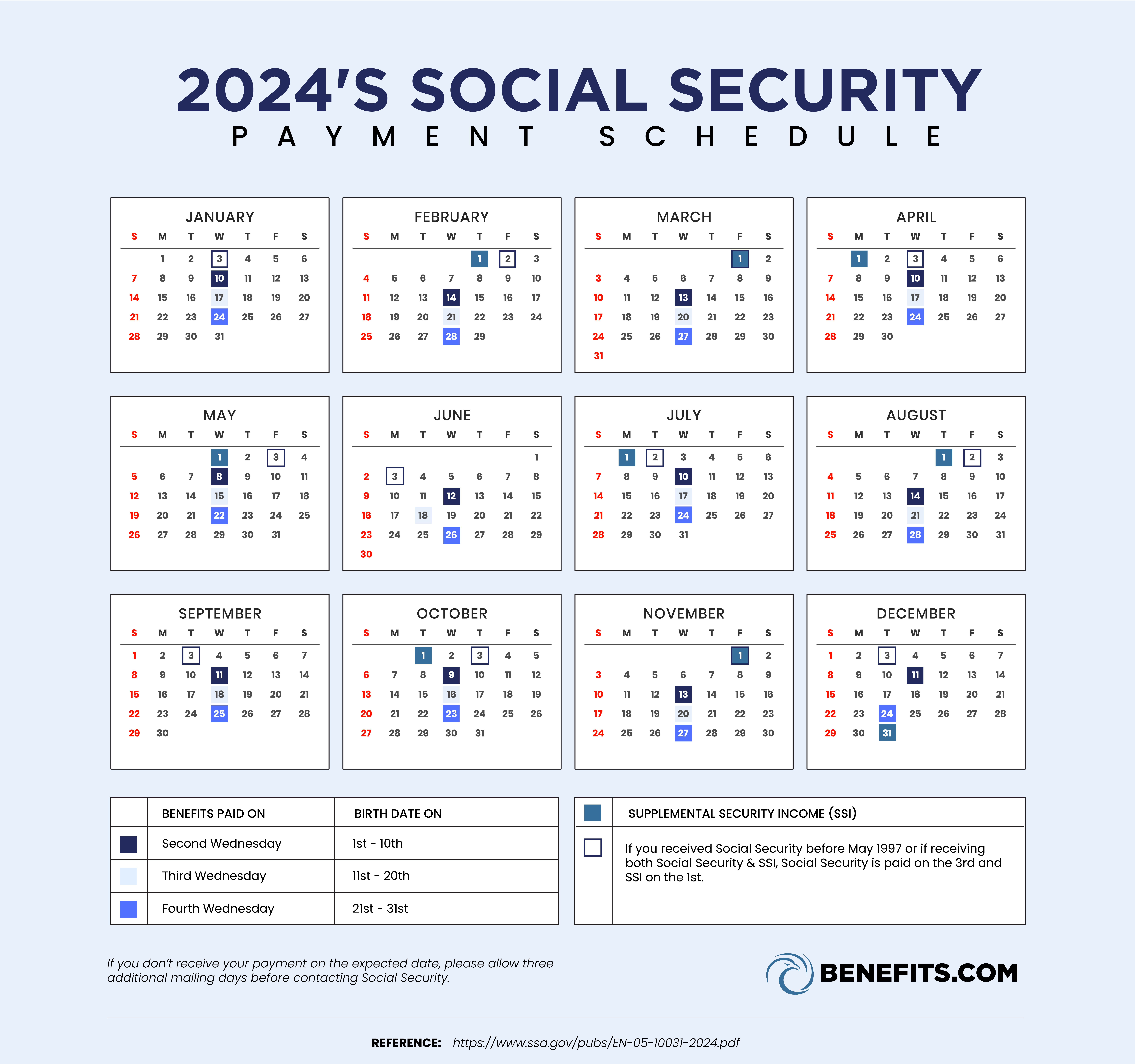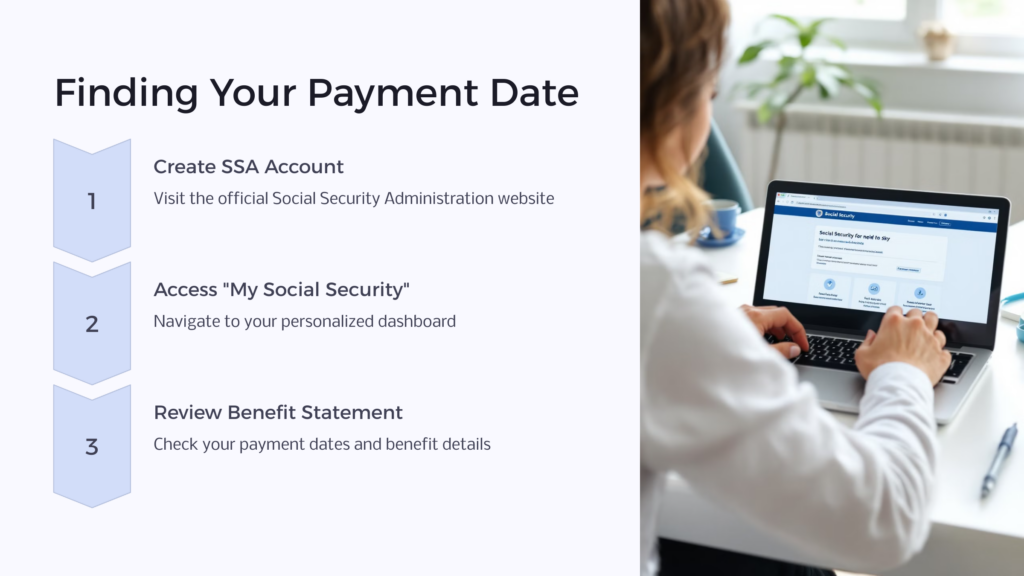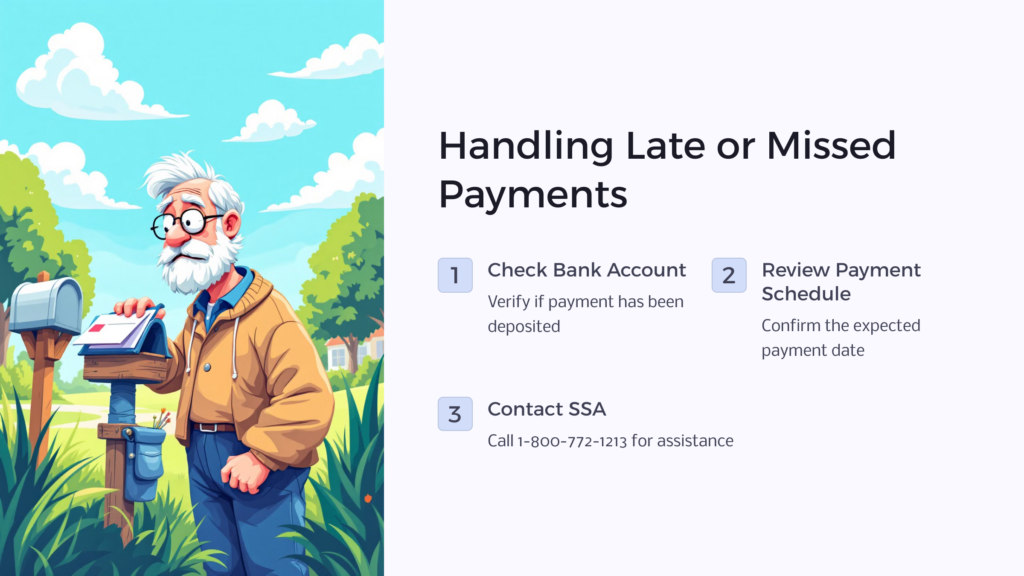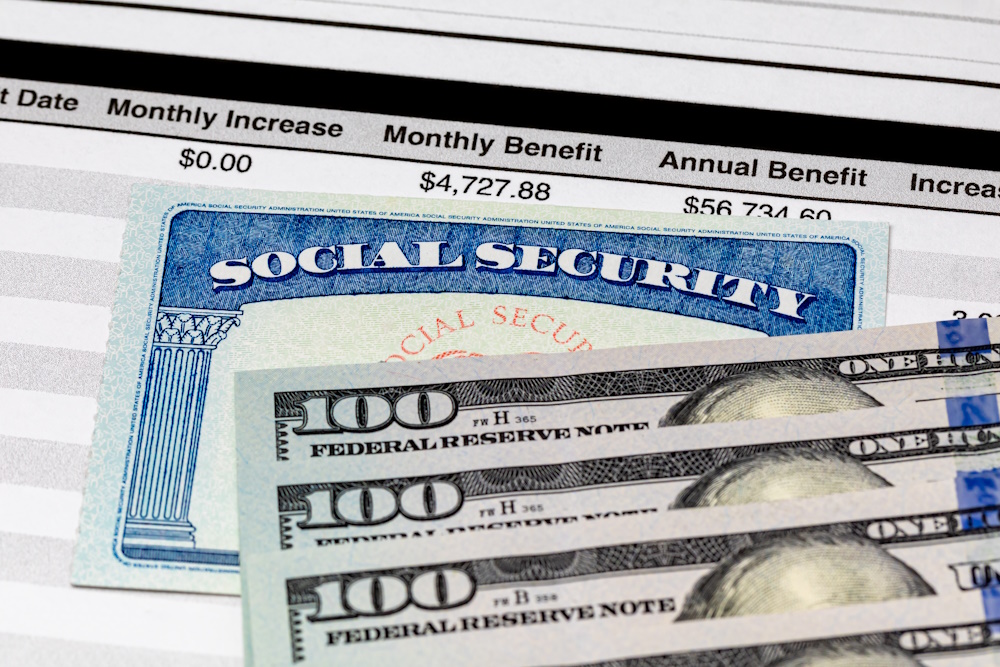As far as managing your retirement life is concerned, there’s nothing more important than keeping abreast of your Social Security payment dates and planning your budget according to your Social Security benefit.
However, with a massive influx of information to keep track of, it’s not uncommon to skip the smaller details, such as the date SSI benefits are disbursed to any social security recipient.
This article discusses all you need to know about social security benefits payment dates within the social security program as a retiree.

Source: SSA.gov
Understanding the Social Security Payment Schedule

Officially called the Old Age, Survivors, and Disability Insurance (OASDI) program, social security provides monthly financial benefits to qualified individuals and their dependents.
It’s an entitlement program financed by employers, employees, and self-employed through their Social Security taxes transferred to two Social Security trust funds.
With a 3.2% social security increase in 2024, you’d want to understand payment timing.
The Social Security payment schedule is a vital aspect of financial planning for millions of individuals across various demographics. The regularity of these payments is a cornerstone for budgeting and financial stability, allowing you to plan your expenses confidently.
The specific day Social Security payments are deposited into accounts can vary. Understanding this timing is crucial if you rely on these funds for your day-to-day needs. The type of benefit, the recipient’s birthdate, and the day of the week can influence the exact timing of your SSDI payment schedule.
To facilitate clarity, you’re often assigned a designated day of the month for your Social Security payment.
Depending on the day you were born, Social Security Disability Insurance your monthly benefit is usually disbursed on the second, third, or fourth Wednesday of the month.
This is an exception to any retiree who started receiving their social security benefits before May 1997, as they’ll have their payments disbursed every third Wednesday of the month.
This ensures a systematic and organized disbursement process.
How to Find Your Social Security Payment Date

When you receive your social security benefits payment depends on your birth date. If your birth date is between the 1st and 10th, you should expect your Social Security payments every second Wednesday of the month.
If your birth date is between the 11th and the 20th, your social security payment is on the third Wednesday of the month.
If your birth date falls between the 21st and 31st, expect your social security payments every fourth Wednesday of the month.
Ensuring you know when to expect your Social Security benefit payments is crucial for effective financial planning.
Create an Account on the Social Security Website
Begin by visiting the official Social Security Administration (SSA) website. Create an account or log in to your existing account. This secure online portal provides a wealth of information about your Social Security benefits.
Navigate to “My Social Security”
Once logged in, locate the “My Social Security” tab. This personalized section of the website offers a dashboard with details about your monthly benefit, including your payment date.
Review Your Benefit Statement
Within “My Social Security,” you’ll find a benefit statement that outlines your expected payment dates. This statement is regularly updated, providing you with the most accurate information.
Check Your Annual Social Security Statement
The Social Security Administration mails an annual statement to all eligible individuals. This statement includes important information, such as your earnings history and estimated benefit payment. Look for details about your payment date in this statement.
Review the “Payment Schedule” Section
Within the statement, locate the “Payment Schedule” section. Here, you’ll find a breakdown of when to expect your Social Security payments throughout the year.
contact the Social Security Administration. Or you can just download the 2024 SSA payment calendar for more info.
Call the SSA Customer Service
If you prefer direct assistance, you can contact the Social Security Administration’s customer service. Be prepared to provide your Social Security number and answer security questions for verification.
Schedule an Appointment
If you prefer face-to-face assistance, consider scheduling an appointment at your local Social Security office. You can do this through the SSA website or by calling customer service.
Social Security Payment Dates During Holidays
Social Security payments are typically scheduled for a certain day of the month. However, if that day falls on a weekend or a federal holiday, the SSI payment is usually moved to the preceding business day. This adjustment ensures that beneficiaries receive their funds without delay.
The Social Security Administration follows the federal holiday calendar. On recognized holidays such as New Year’s Day, Independence Day, Thanksgiving, and Christmas, government offices, including Social Security, are closed. As a result, payments that would have been processed on these days are shifted to the nearest preceding business day.
Payment Processing Time
While the Social Security Administration processes payments in advance to account for weekends and holidays, the actual deposit into individual bank accounts may take an additional day or two. Factors such as the banking institution’s processing time can influence when the funds become available.
Recipients enrolled in direct deposit often experience a smoother process during holidays. Direct deposit ensures that funds are electronically transferred to the recipient’s bank account, eliminating potential delays in mailing physical checks.
The Social Security Administration is proactive in communicating any changes to the payment schedule, especially during holiday periods. Beneficiaries are often notified well in advance through various channels, including online notifications, mailed statements, and direct communication if necessary.
Planning Ahead
To mitigate any financial challenges during holiday periods, you should plan. Understanding the adjusted payment schedule and potential delays allows you to manage your budgets effectively.
Late or Missed Social Security Payments: What to Do?

While the Social Security Administration strives to maintain a reliable payment schedule, there may be instances where recipients experience delays or, in rare cases, miss their scheduled payments to an SSI recipient. This is usually common among those expecting a social security check via email. If you find yourself in such a situation, it’s essential to take prompt and informed action.
Check Your Bank Account
Start by verifying your bank account. Occasionally, delays can occur due to processing times or other factors. Confirm that the expected deposit has not been credited to your account before taking further action.
Refer to the Payment Schedule
Consult the official Social Security payment schedule. Ensure that the current date aligns with the adjusted schedule, especially if the regular payment date falls on a weekend or a holiday. The Social Security Administration often makes adjustments to accommodate such occurrences.
Contact Your Bank
If the expected benefit payment is not in your account and the payment date has passed, contact your bank. Inquire about any potential issues with the deposit and verify that there are no holds or other complications.
Contact the Social Security Administration
If all else doesn’t work, you must contact your local Social Security office or the Social Security Admin office. They can be reached via phone at 1-800-772-1213, Monday through Friday, between 8 a.m. through 7 p.m. SSI Beneficiaries with hearing impairment may reach the SSA’s TTY line at 1-800-325-0778.
Check for Outstanding Debts
In some cases, outstanding debts or obligations, such as child support or other government debts, can result in deductions from your Social Security payments. Verify if there are any outstanding issues in this regard.
File an Appeal if Necessary
If your efforts to resolve the issue are unsuccessful, you may need to file an appeal with the Social Security Administration. Consult their website or contact customer service for guidance on the appeals process.
Direct Deposit vs. Check: Pros and Cons
Deciding how to receive Social Security payments is a pivotal choice that can significantly impact the convenience and security of managing personal finances. Two primary methods exist for receiving these payments: direct deposit and traditional paper checks. Both options have distinct advantages and disadvantages, catering to the diverse needs and preferences of recipients.
Direct Deposit
Direct deposit is a modern and efficient method of receiving Social Security payments. One of its key advantages is the timeliness it offers. With direct deposit, funds are electronically transferred into the recipient’s bank account on the scheduled payment date, eliminating delays associated with traditional mail delivery. This ensures reliable and consistent access to funds, particularly critical for individuals dependent on timely payments for their financial obligations.
Security is another notable benefit of direct deposit. The electronic transfer of funds minimizes the risk of lost or stolen checks, protecting recipients. Additionally, direct deposit offers convenience, as there is no need to visit a bank or wait for a check to clear.
The immediate availability of funds enhances financial flexibility and ease of use. From an environmental standpoint, direct deposit is also advantageous as it eliminates the need for paper checks, contributing to sustainability efforts.
However, direct deposit may not appeal to everyone. Some individuals appreciate the tangible nature of paper checks as they provide a physical transaction record. Additionally, for those without a bank account, direct deposit may pose a challenge, requiring them to open an account to access this option.
Paper Checks
On the other hand, traditional paper checks offer a tangible payment record, providing reassurance for those who prefer a physical document. This method also accommodates individuals who do not have a bank account or choose not to use direct deposit, ensuring financial access for the unbanked population.
Despite these advantages, paper checks have notable drawbacks. The potential for loss, theft, or delay in the mail poses security risks and may disrupt timely access to funds. The processing time involved in depositing a paper check is typically longer than electronic transfer, as it requires physical transportation and manual processing.
Furthermore, the production and transportation of paper checks contribute to environmental impacts, including deforestation and carbon emissions. The inconvenience of physically visiting a bank to deposit the check may also be a factor, especially for individuals with mobility issues.
The decision between direct deposit and paper checks depends on your preferences, access to banking services, and the importance placed on tangibility and immediate access to funds. You should weigh these considerations to choose the best method for your unique needs and circumstances.
Tips for Managing Your Social Security Payments Wisely
- Create a Budget- Start by creating a detailed budget that outlines your monthly expenses. Categorize your spending into essential needs, such as housing, utilities, and groceries, and discretionary items, such as entertainment. This will provide a clear picture of where your money is going.
- Prioritize Essential Expenses- Ensure that your essential expenses are covered first. This includes housing costs, utilities, food, and healthcare. By prioritizing these necessities, you can build a foundation for financial security.
- Emergency Fund– Consider establishing an emergency fund to cover unexpected expenses, such as medical bills or car repairs. Having a financial cushion can prevent you from relying solely on your monthly Social Security income for unplanned costs.
- Understand Your Benefits- Familiarize yourself with the details of your Social Security benefits. Know the type of benefits you receive, the amount, and the schedule of payments. This knowledge is essential for effective financial planning.
- Optimize Tax Strategies– Understand the tax implications of your Social Security income. In some cases, a portion of your benefits may be taxable. Explore tax strategies to minimize your tax liability and retain more of your income.
- Explore Additional Income Sources- If possible, consider exploring supplementary income sources, such as part-time work or freelance opportunities. This can provide an extra financial cushion and enhance your overall financial well-being.
- Debt Management- Prioritize paying off high-interest debts. Allocating a portion of your Social Security income towards debt reduction can free up more funds for your essential needs and future financial goals.
- Healthcare Planning- Factor in healthcare costs when planning your budget. Medicare premiums, prescription medications, and other medical expenses should be accounted for to avoid unexpected financial strain.
- Stay Informed About Changes- Keep informed about any changes in Social Security policies or benefits. Regularly check the Social Security Administration’s updates and ensure you know of any adjustments to your payment schedule or benefits.
- Use Direct Deposit- Consider opting for direct deposit for a faster and more secure receipt of your Social Security payments. Direct deposit ensures that your funds are available on the scheduled payment date, eliminating delays associated with mail delivery.
- Plan for Inflation- Inflation factor when creating your budget and financial plan. While Social Security benefits are adjusted periodically for inflation, it’s essential to plan for potential increases in the cost of living.
Benefits and Planning
Regarding social security benefits payment, there are a handful of rules and information to remember. Even the slightest mistake can impact your retirement life.
Accidentally overspending on your monthly budget due to your misinformation about when social security benefits payment will be deposited isn’t something you should experience, so be sure to mark the appropriate date for your payment on your calendar.

For further information and assistance, we encourage you to explore the resources available on Benefits.com. We provide valuable insights, tools, and resources to help you make informed decisions about Social Security benefits.
Contact us for additional guidance and support in maximizing your Social Security benefits.
 Benefits.com Advisors
Benefits.com Advisors
With expertise spanning local, state, and federal benefit programs, our team is dedicated to guiding individuals towards the perfect program tailored to their unique circumstances.
Rise to the top with Peak Benefits!
Join our Peak Benefits Newsletter for the latest news, resources, and offers on all things government benefits.




















